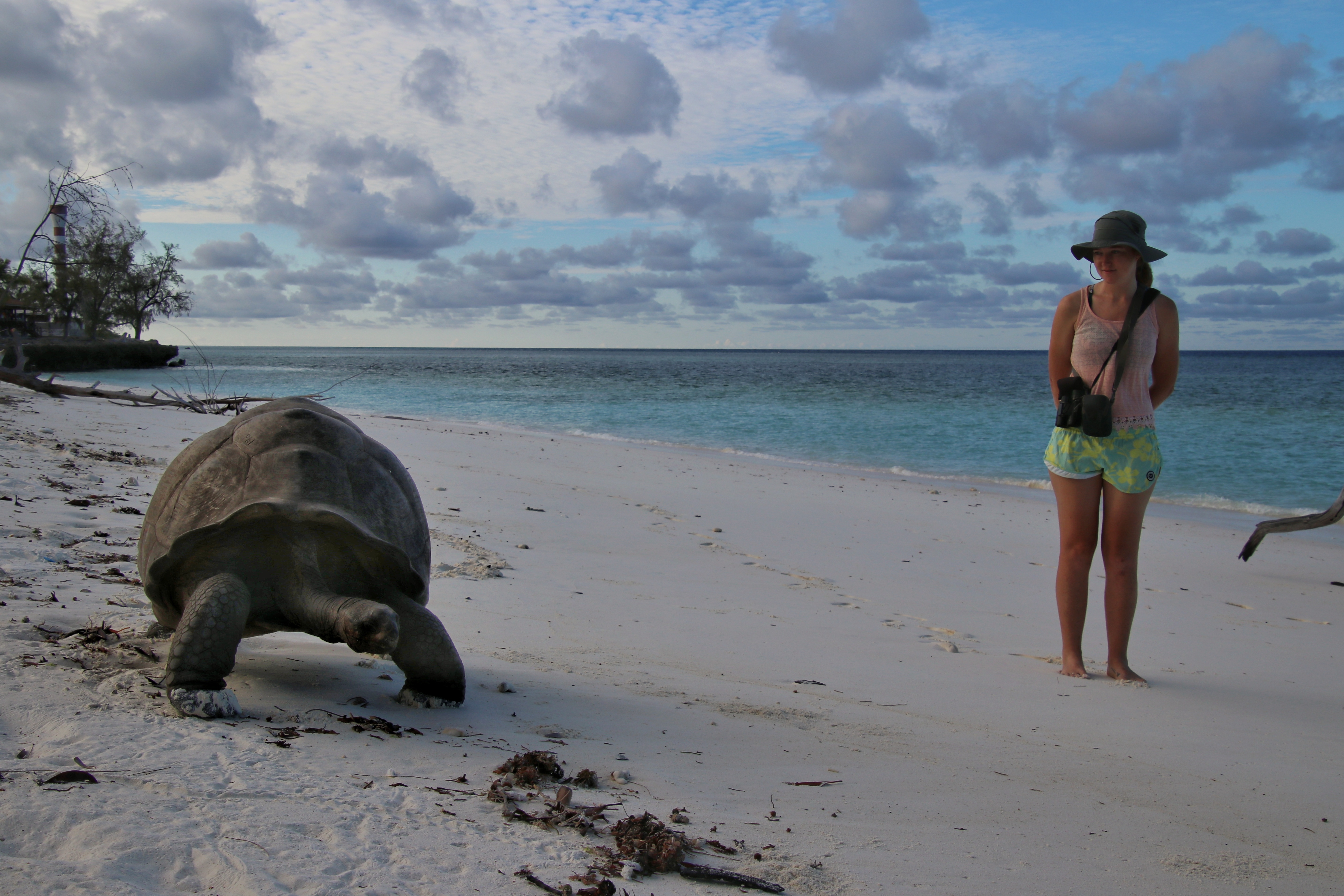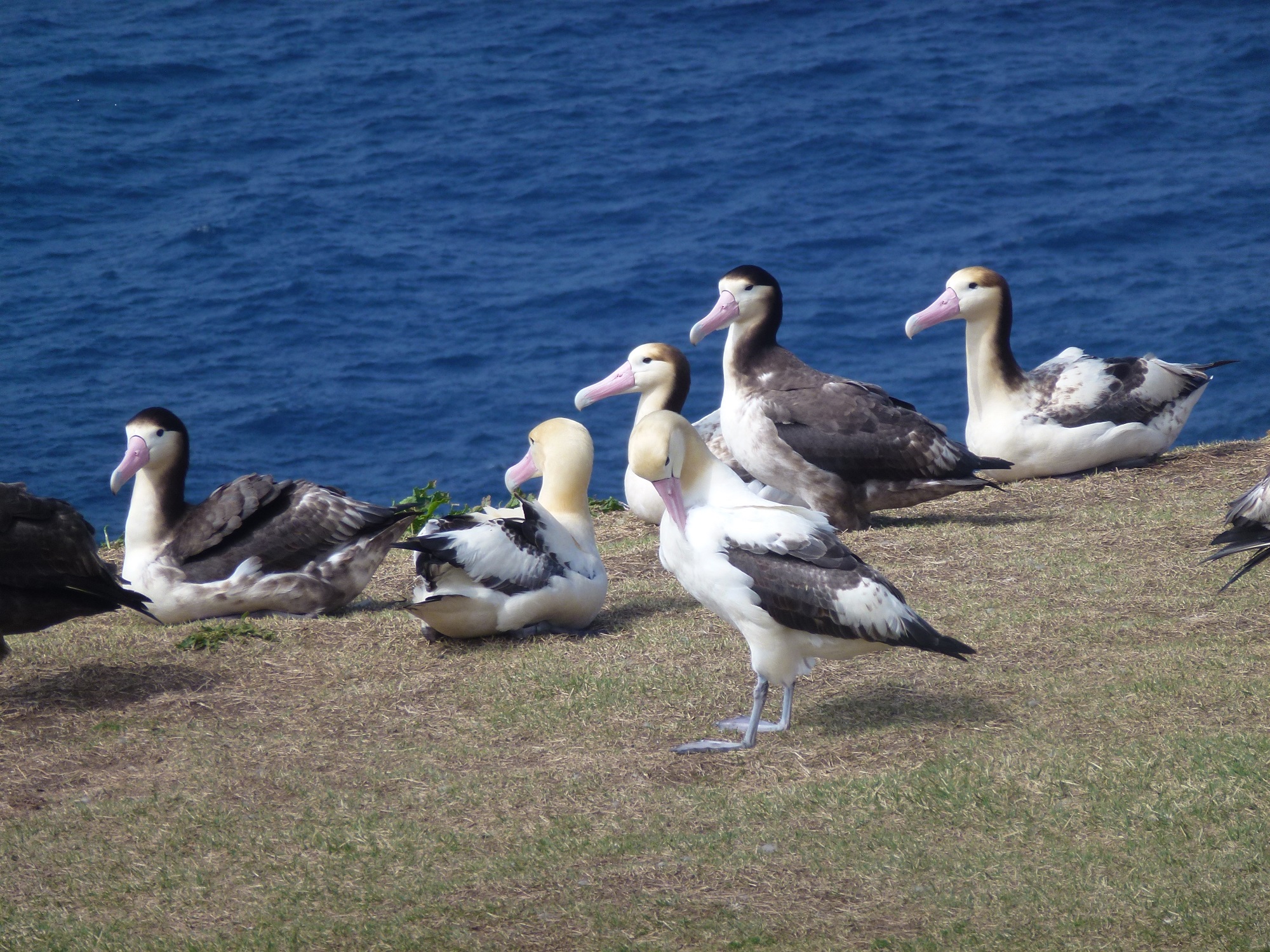
Age-related variation in the plumage of Short-tailed Albatrosses
NOTE: This post continues an occasional series that features photographs of the 31 ACAP-listed species, along with information from and about their photographers. Here, Naoki Tomita illustrates the Vulnerable Short-tailed Albatrosses Phoebastria albatrus that he studies on Torishima, the species’ main breeding locality. Naoki is a Researcher in the Division of Avian Conservation at the Yamashina Institute for Ornithology in Japan.
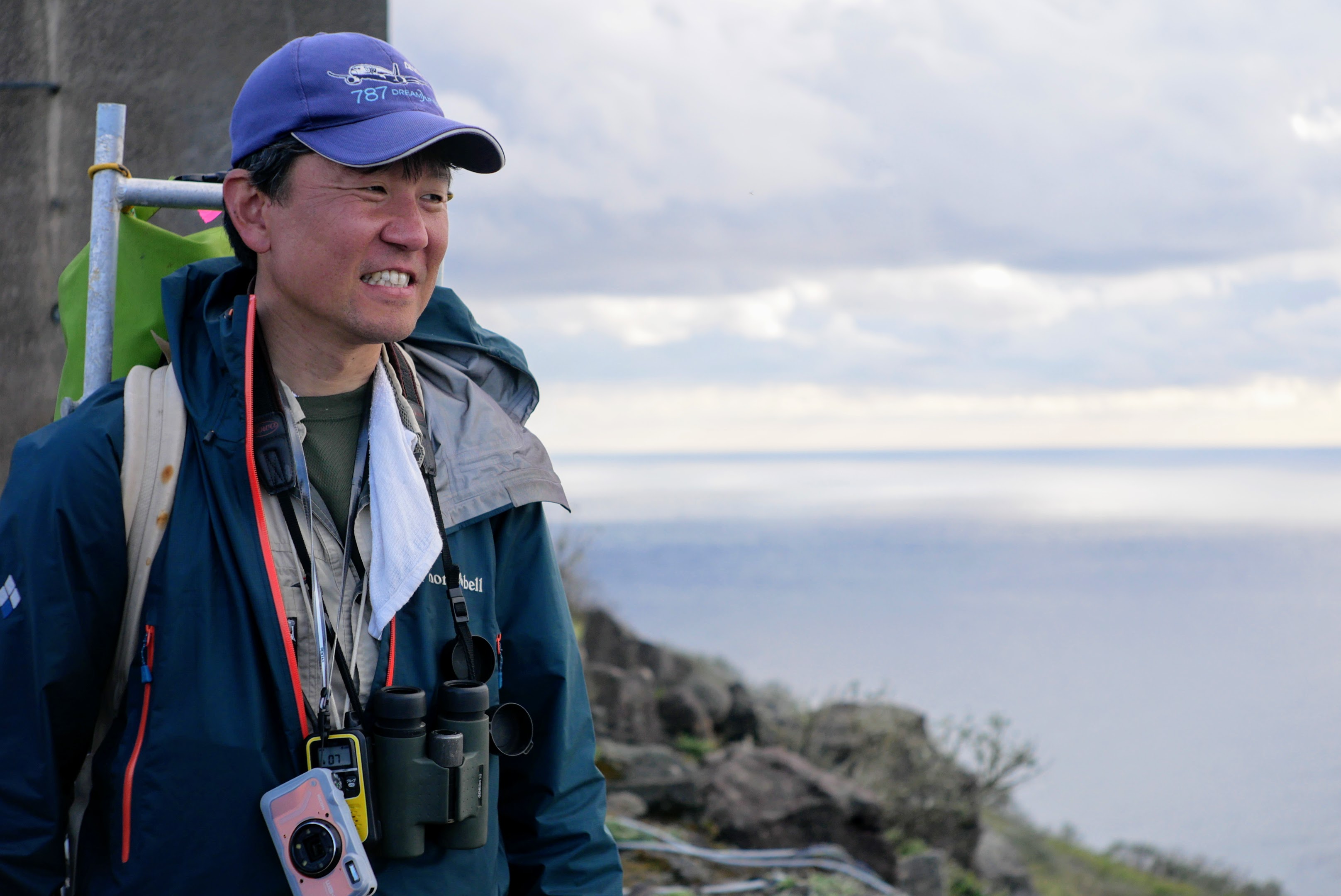
Naoki Tomitsa on Torishima; photograph by Masayoshi Kamioki
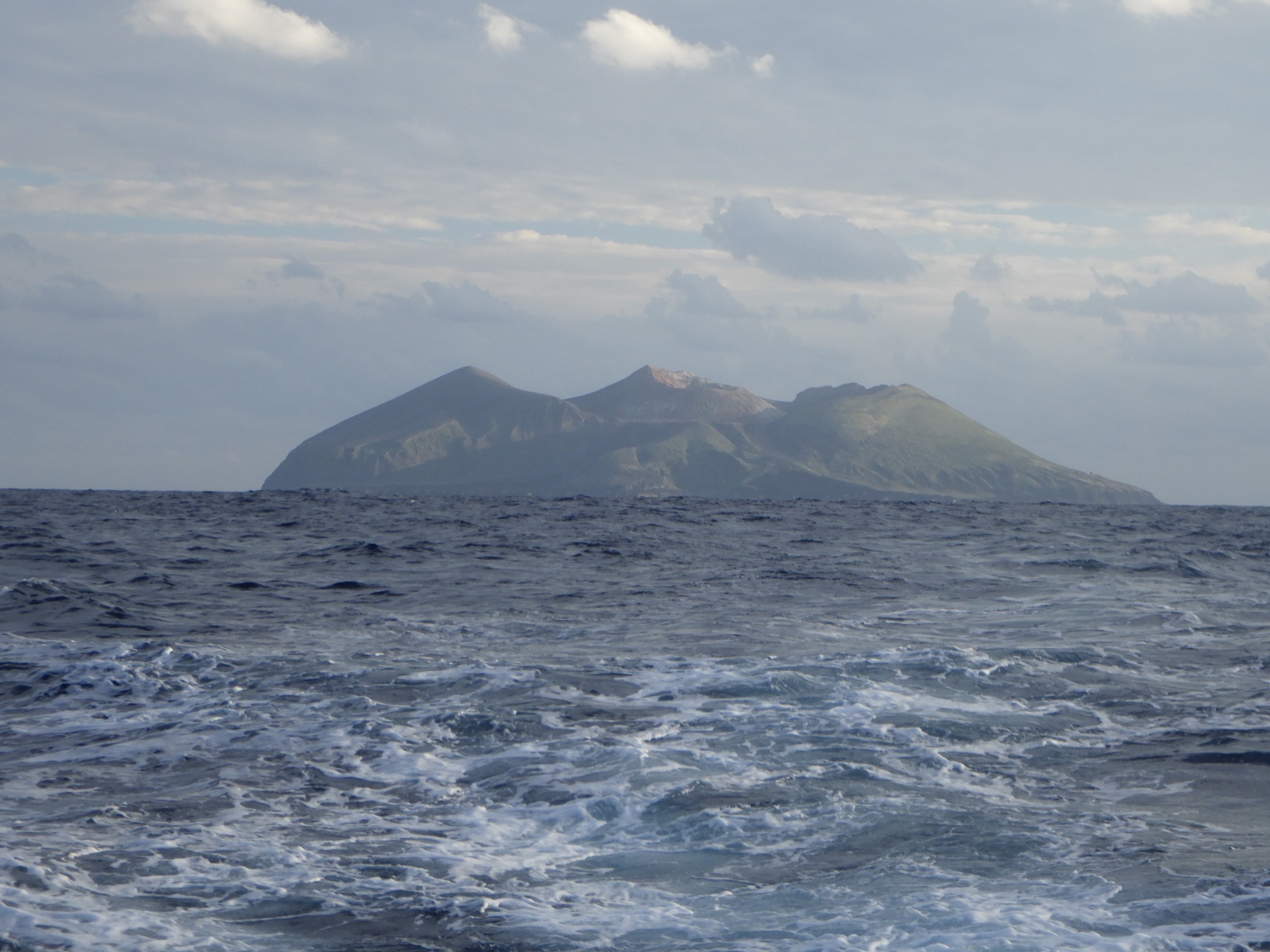
Torishima, home of the Short-tailed Albatross
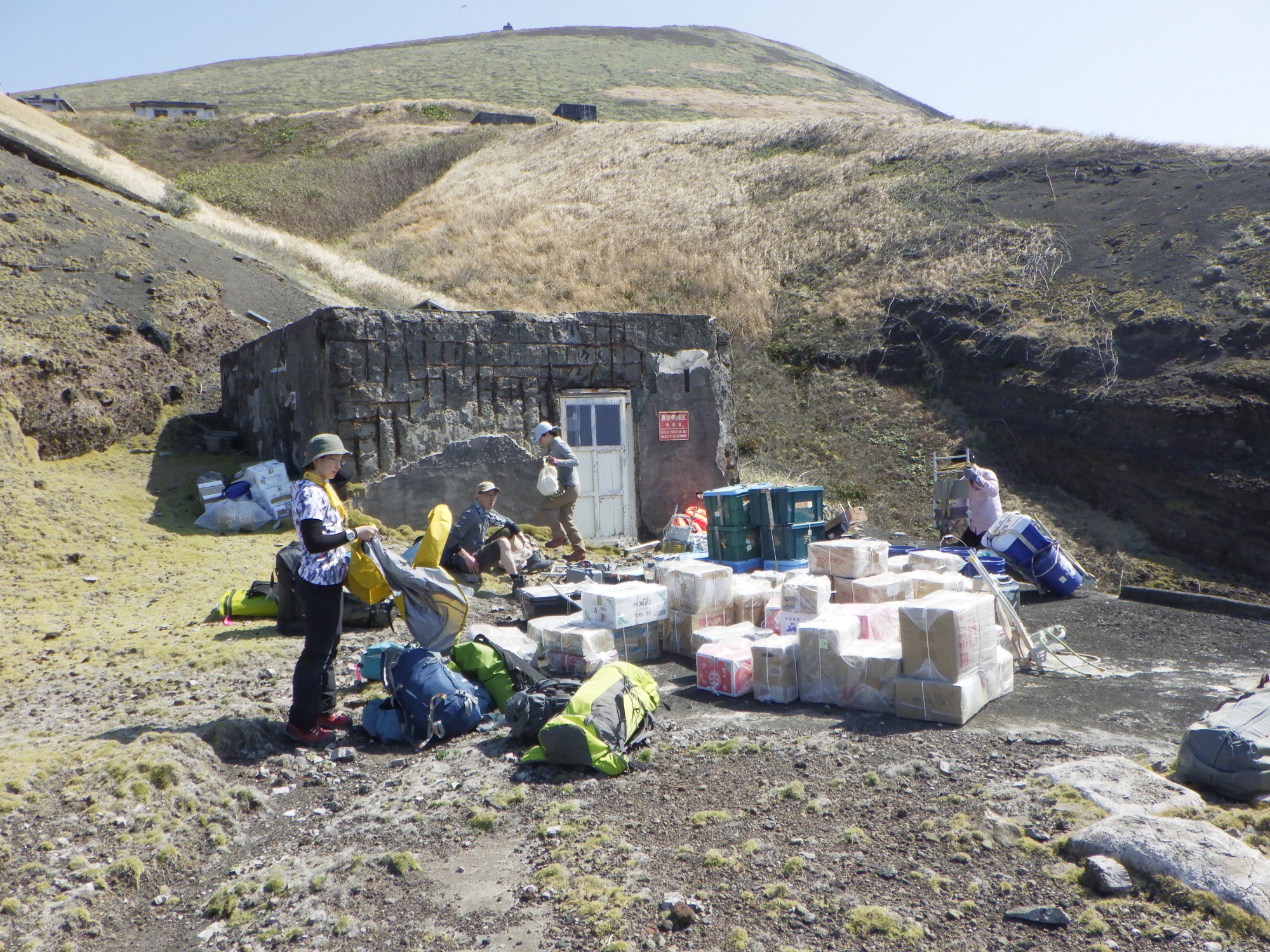
Landing and unloading on Torishima; photograph by Masayoshi Kamioki
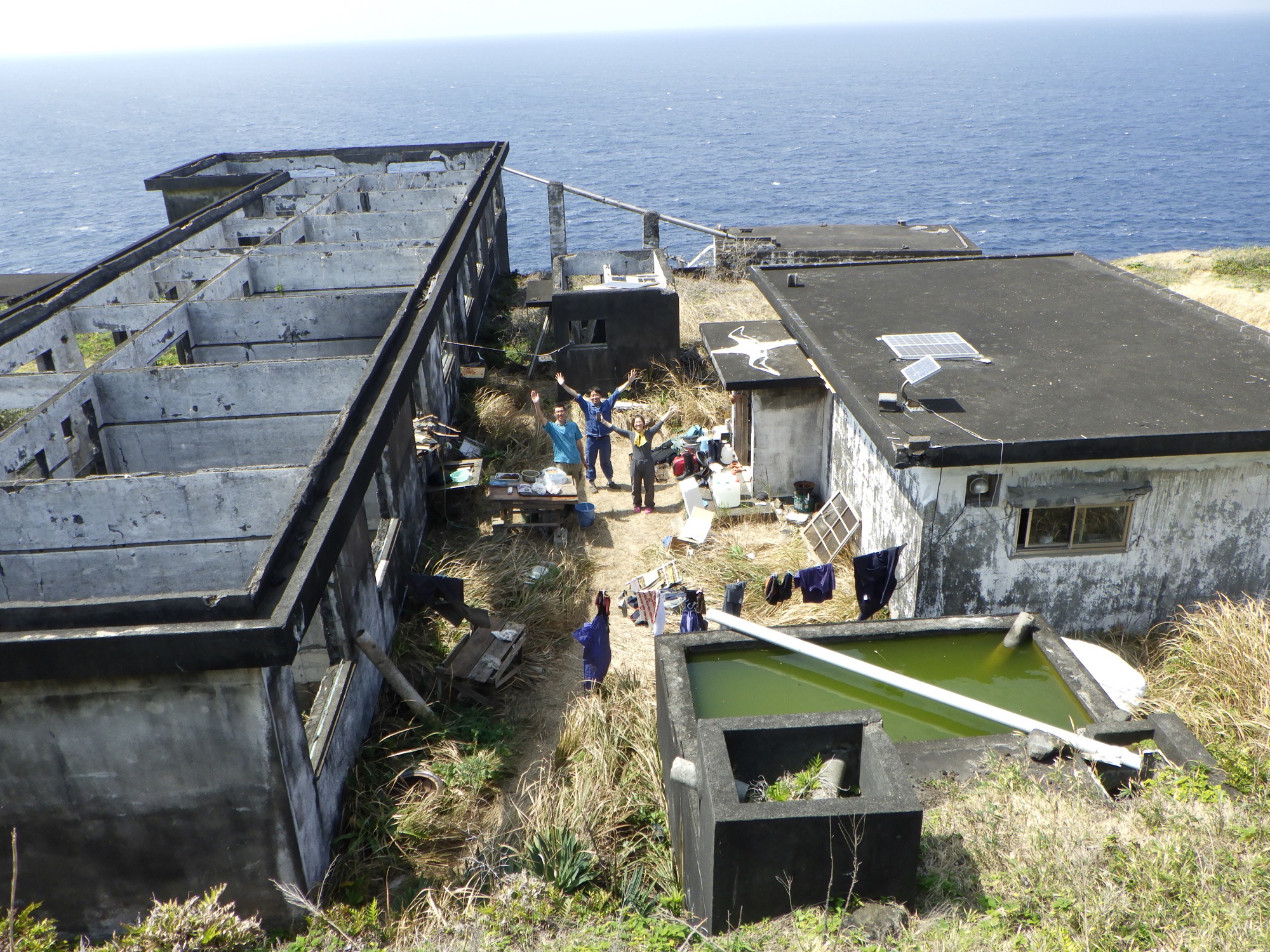
On the island we stay in a weather station that was used until 1965 and is being repaired
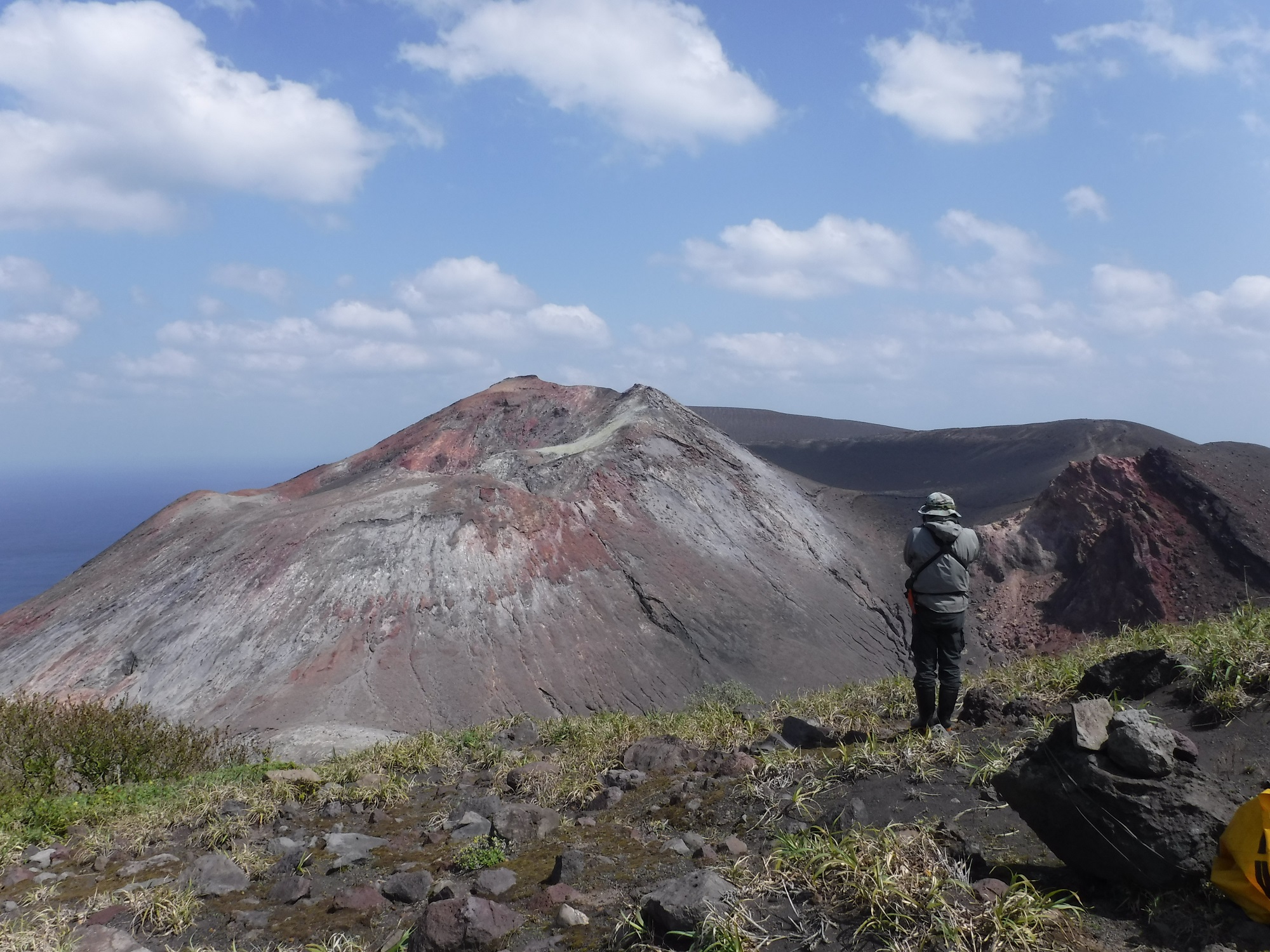
The crater of Mount Iwo-yama, an active volcano on Torishima. There were pyroclastic flow eruptions in 1902 and 1939, and a recent small eruption in 2002
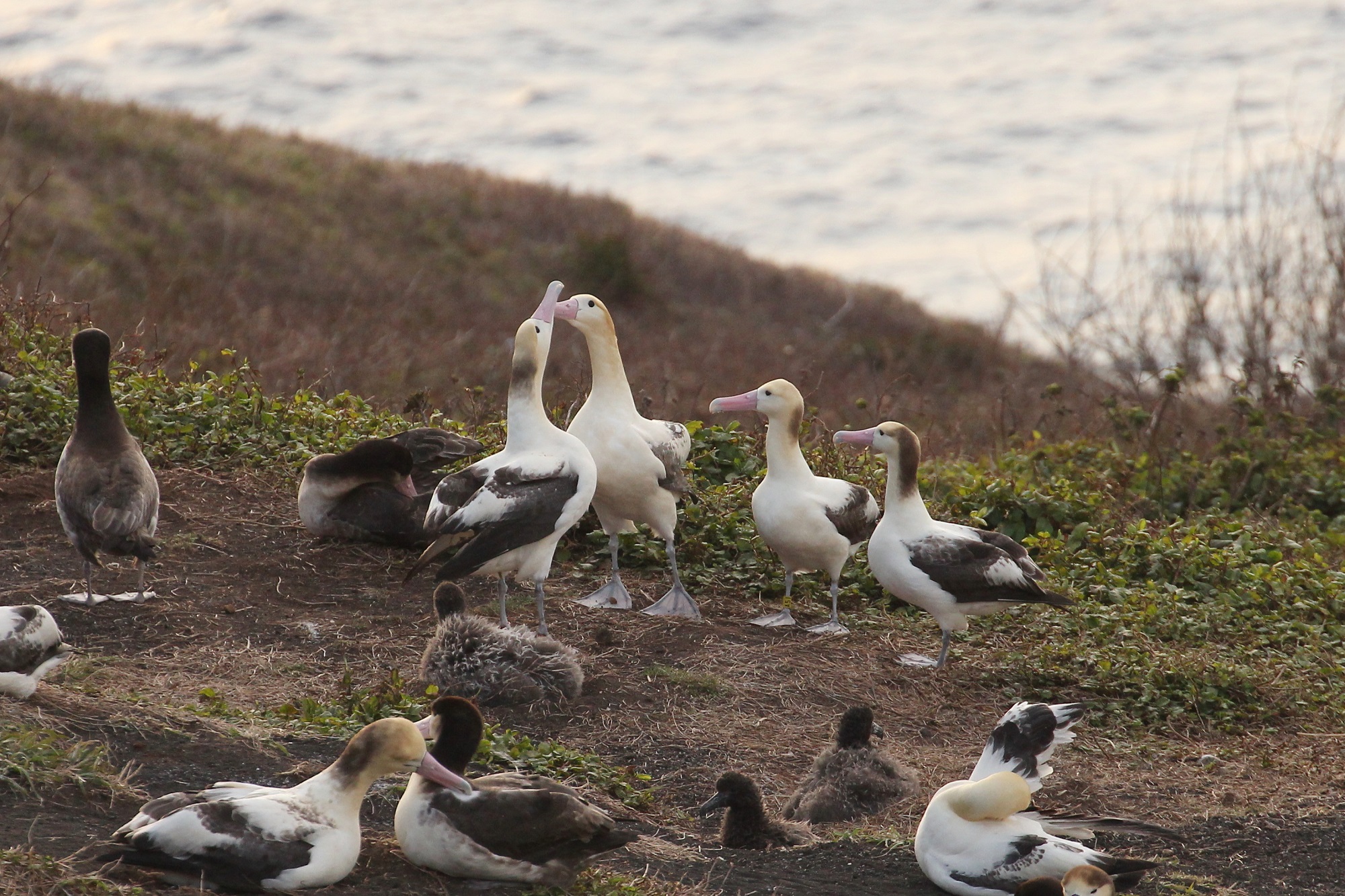
The Short-tailed Albatross was recently described as a species complex comprising two genetically and morphologically distinct populations (Torishima and Senkaku types), with assortative but incomplete mating between birds of both types on Torishima. (from left to right: a female and a male of the Torishima type, two females of the Senkaku type). The Torishima type is larger in overall size than the Senkaku type. Read more here; photograph by Miwa Konno
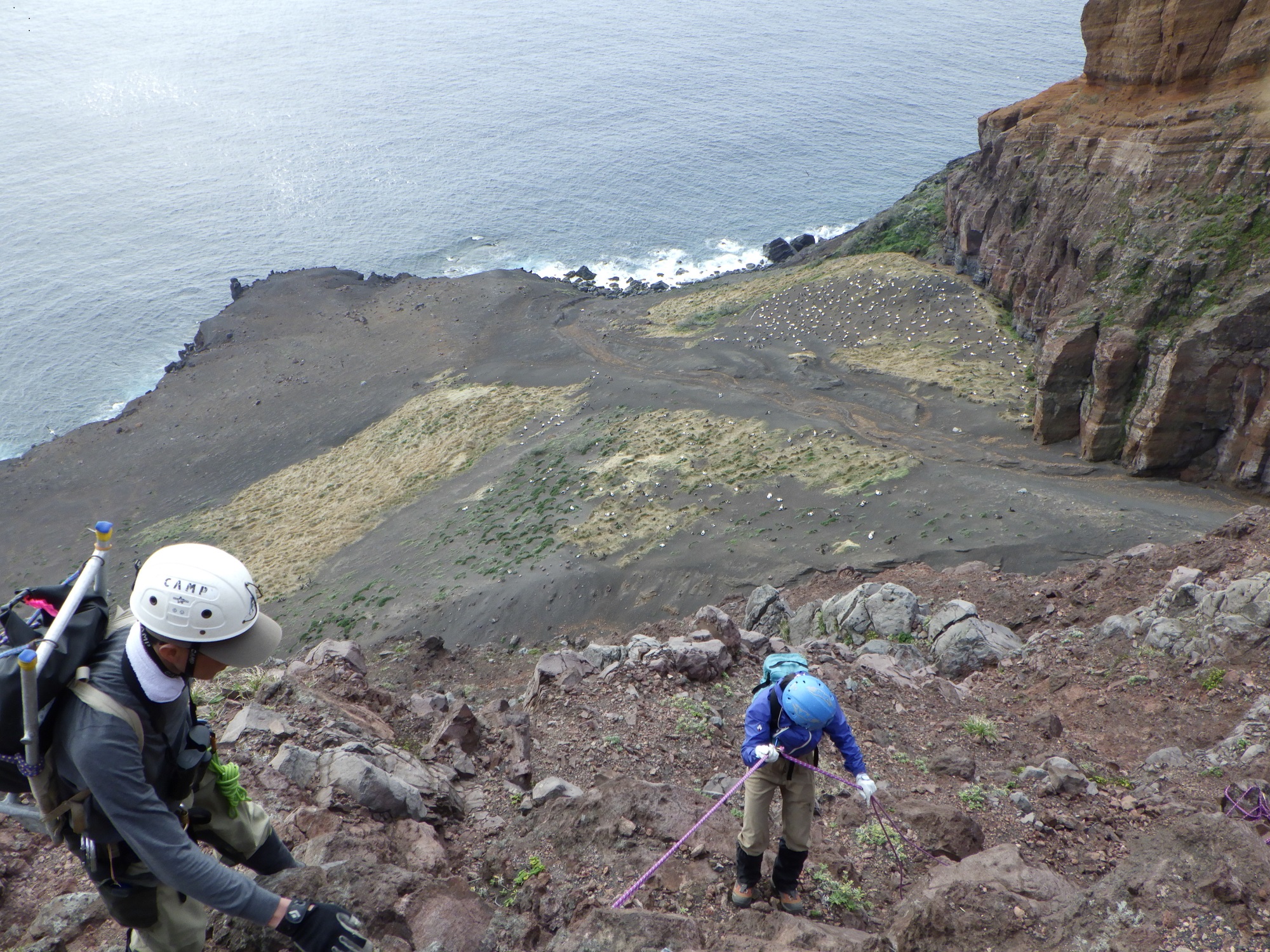
The Tsubamezaki Colony in the distance where Short-tailed Albatrosses were rediscovered breeding in 1951. It is necessary to descend the cliff using a rope

The Tsubamezaki Colony. Because of the steep slope, eggs and chicks can roll out of the nest; in addition, heavy rains cause scoria to flow down from the cliff
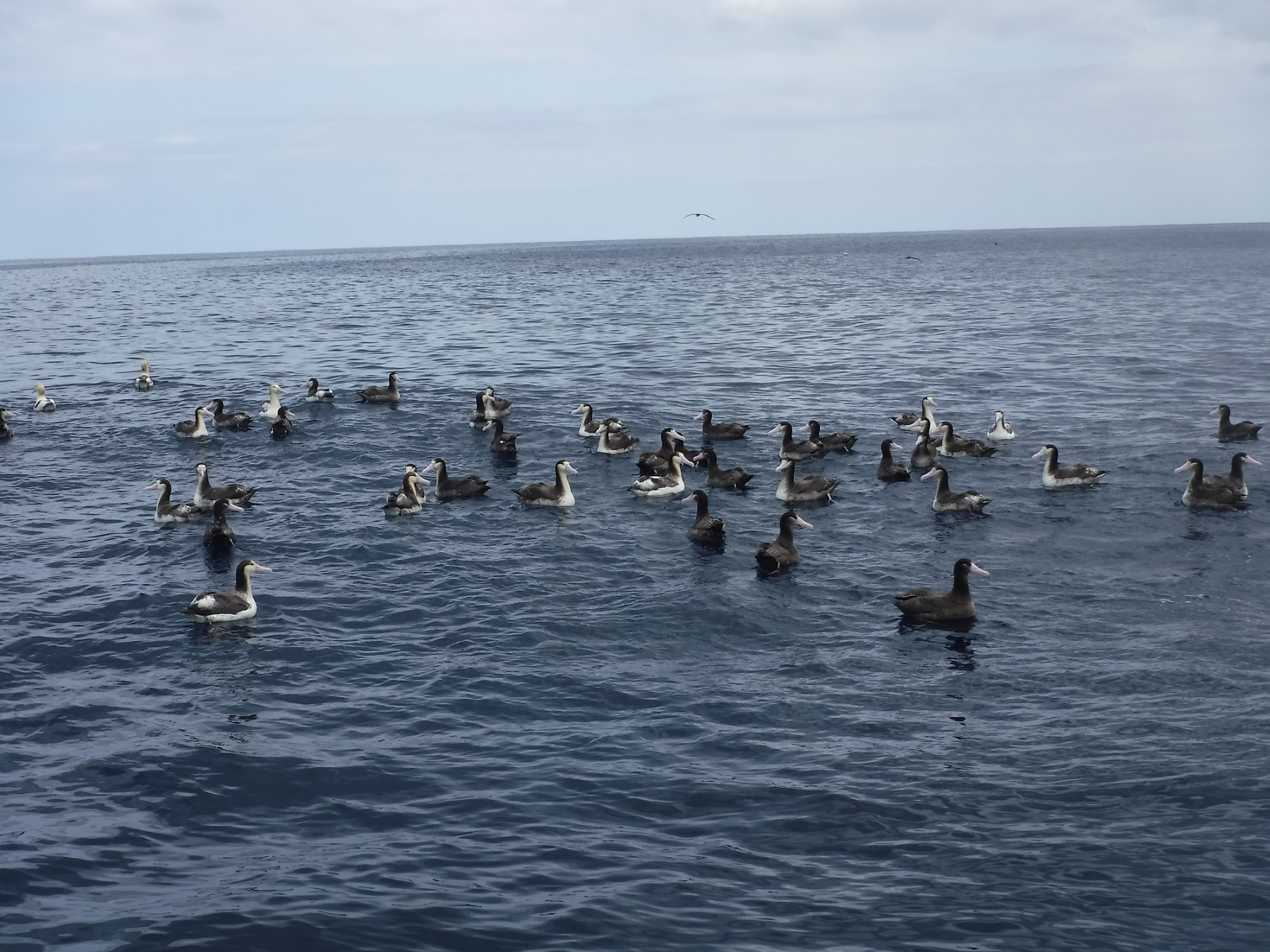
Young Short-tailed Albatrosses gather at sea near Torishima

Two Short-tailed Albatrosses engage in a courtship display

Researchers (Naoki Tomita second left) with their World Albatross Day 2020 banner. The Hatsunezaki Colony shown here was artificially established in 1995 by attracting birds using decoys and audio devices; photograph by Miwa Konno
Photographs by Naoki Tomita unless stated.
Selected Publications:
Eda, M., Yamasaki, T., Izumi, H., Tomita, N., Konno, S., Konno, M., Murakami, H. & Sato, F. 2020. Cryptic species in a Vulnerable seabird: short-tailed albatross consists of two species. Endangered Species Research . 43: 375-386.
Nishizawa, B., Thiebot, J.-B., Sato, F., Tomita, N., Yoda, K., Yamashita, R., Takada, H. & Watanuki, Y. 2021. Mapping marine debris encountered by albatrosses tracked over oceanic waters. Scientific Reports doi.org/10.1038/s41598-021-90417-x.
Senzaki, M., Terui, A., Tomita, N., Sato, F., Fukuda, Y., Kataoka, Y. & Watanuki, Y. 2019. Long-term declines in common breeding seabirds in Japan. Bird Conservation International: 30: 434-446.
Thiebot, J.-B., Nishizawa, B., Sato, F., Tomita, N. & Watanuki, Y. 2018. Albatross chicks reveal interactions of adults with artisanal longline fisheries within a short range. Journal of Ornithology 159: 935-944. (video of metal detector in use in supplementary material).
Tsukamoto, S., Nishizawa, B., Sato, F. & Tomita, N. & Watanuki, Y. 2019. Determination of on-water and feeding activities of Black-footed Albatrosses using acceleration and images. Japanese Journal of Ornithology 68: 29-41.
Naoki Tomita, Division of Avian Conservation, Yamashina Institute for Ornithology, Abiko, Chiba, Japan, 21 January 2022, updated 22 January 2022

 English
English  Français
Français  Español
Español 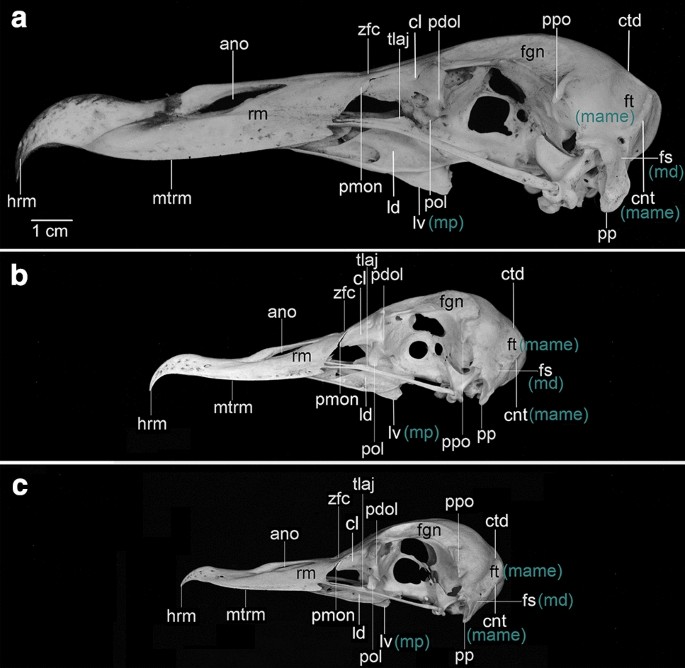 From the publication giant petrel skull at the top
From the publication giant petrel skull at the top 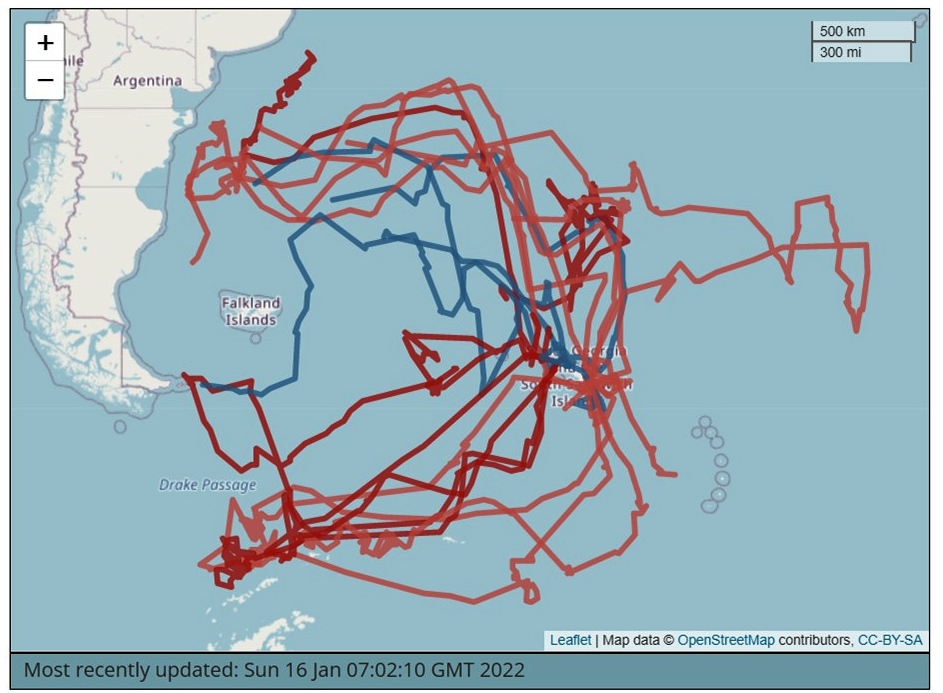
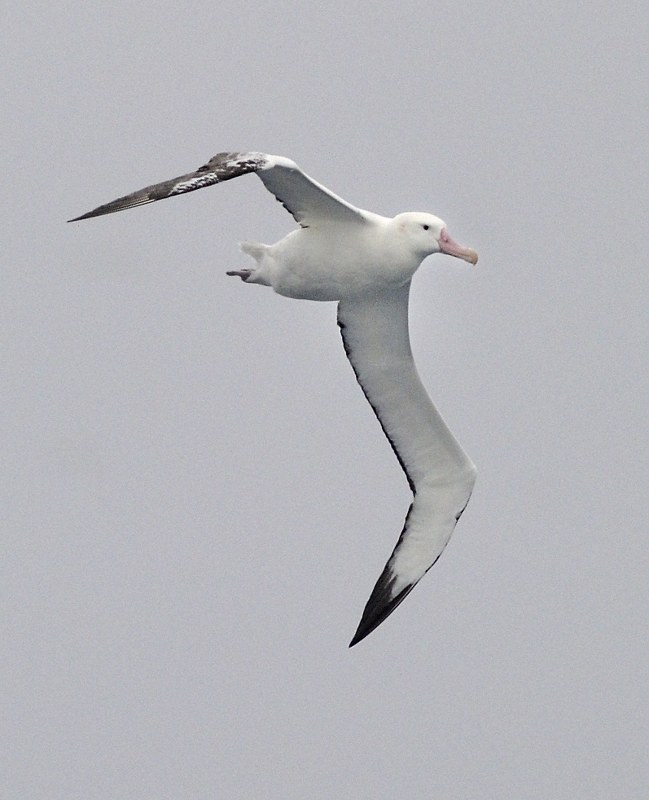
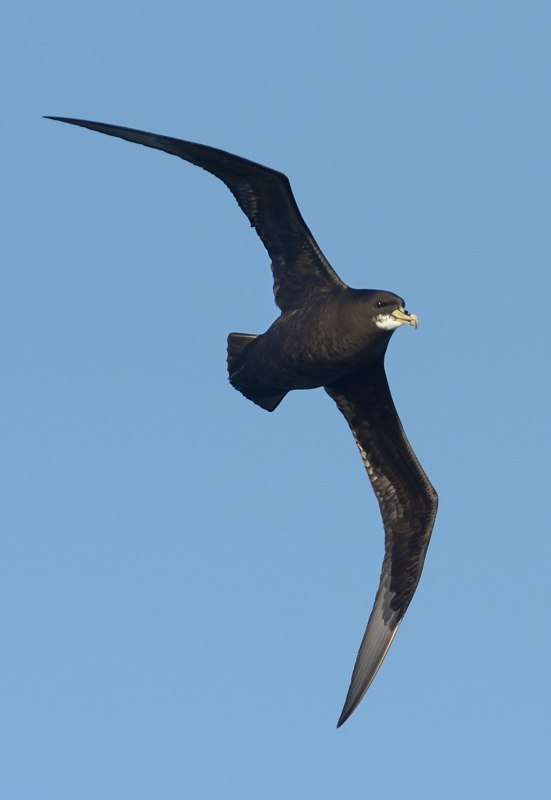
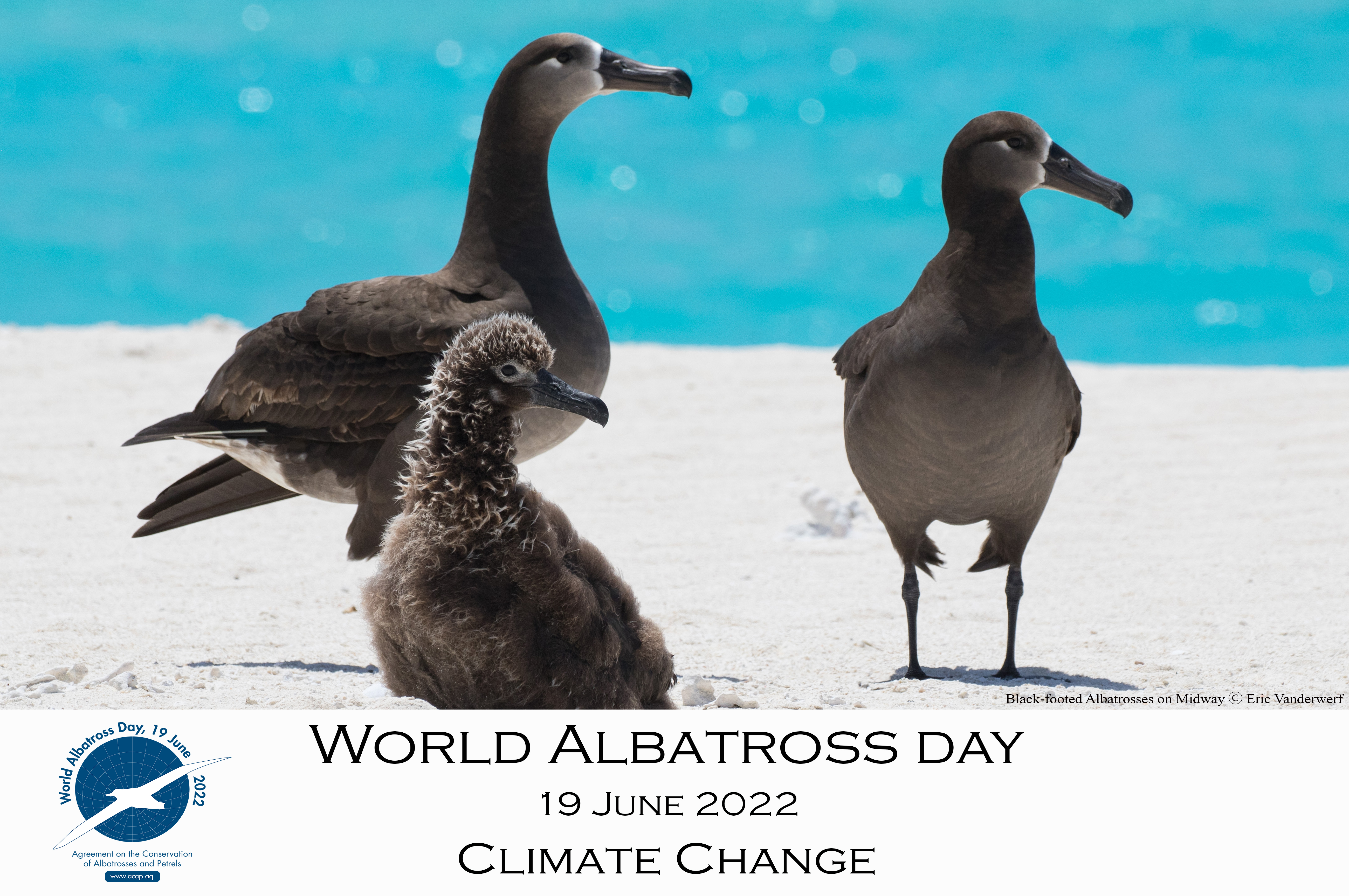
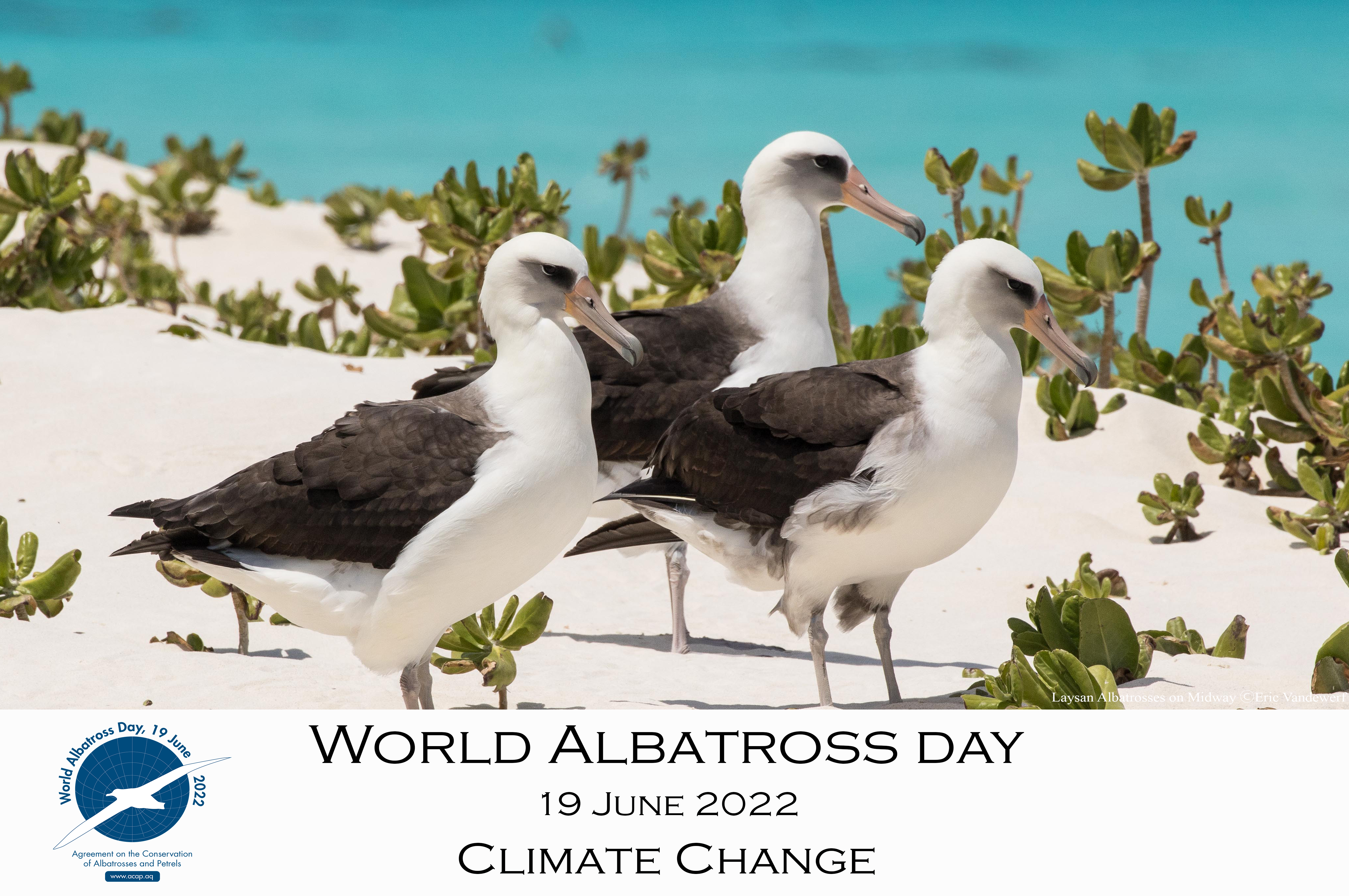
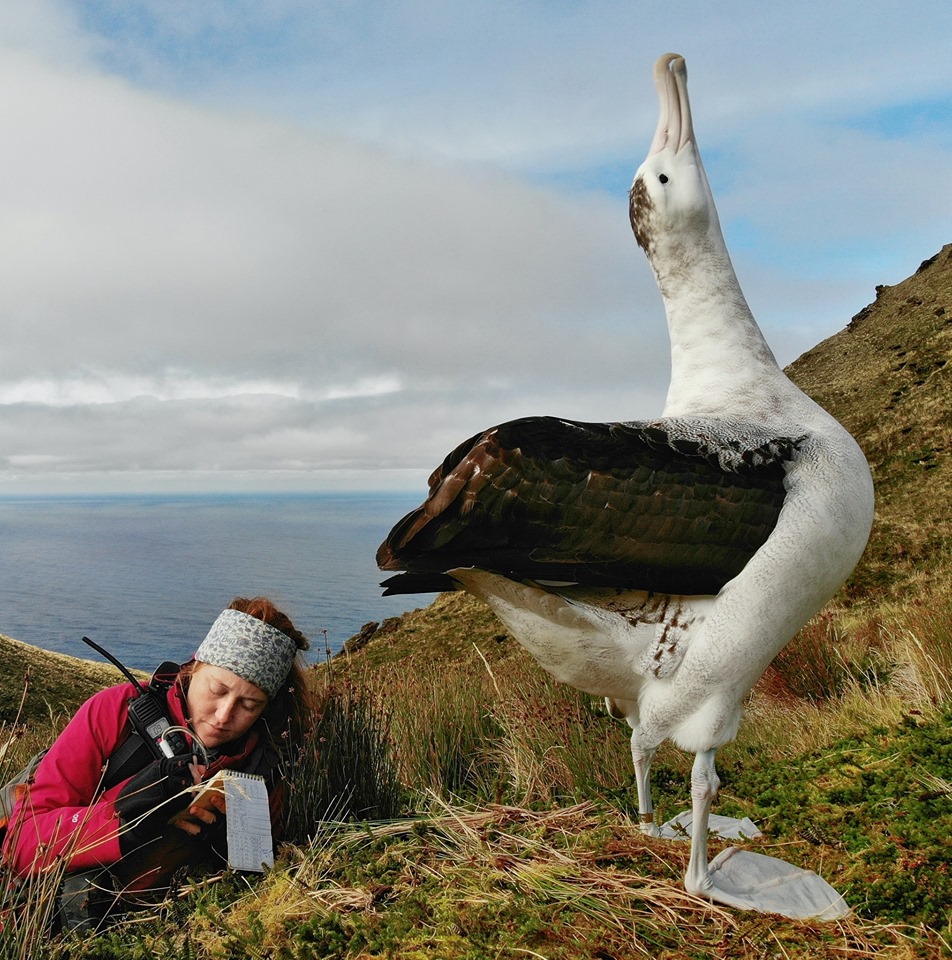 Michelle Risi records the band number of a non-breeding
Michelle Risi records the band number of a non-breeding 